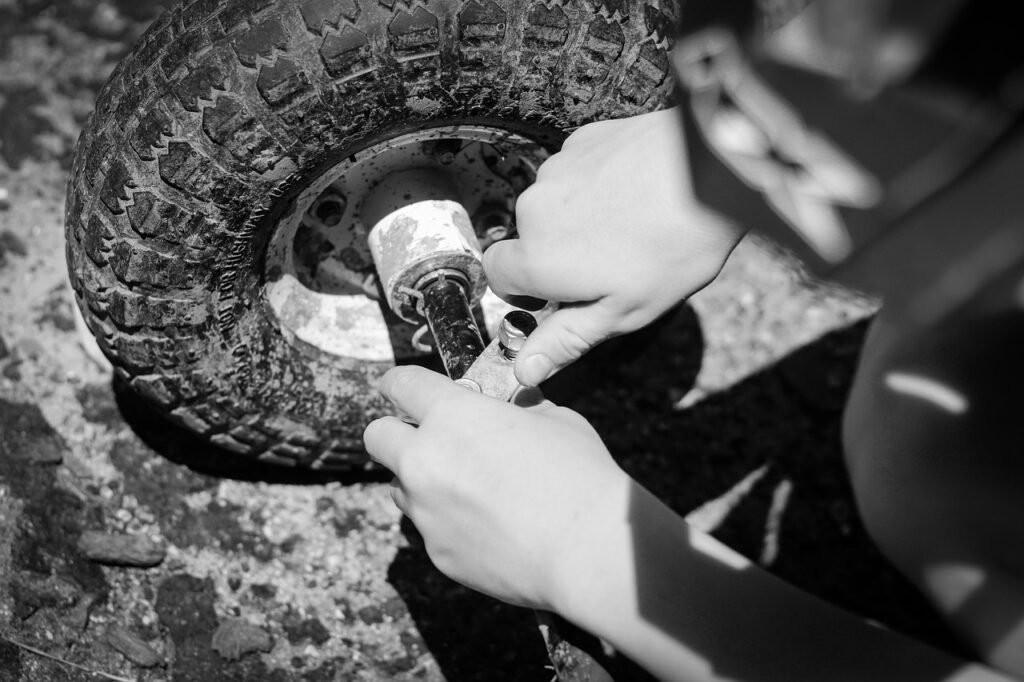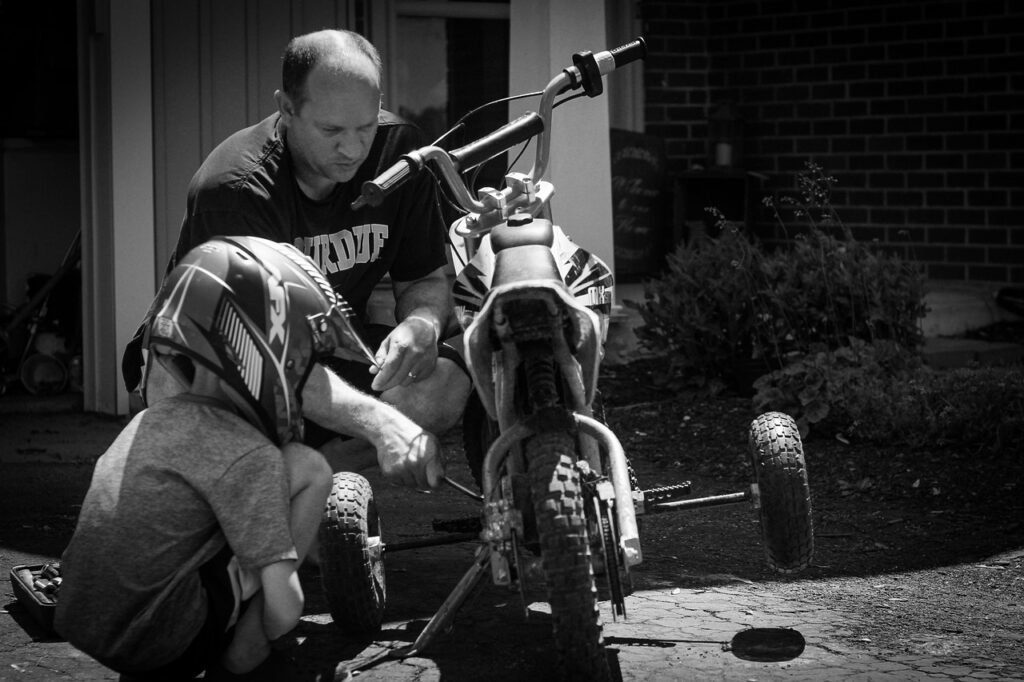Maintaining Your Bike’s Performance with a Regular Check-Up
Taking care of your bike is crucial to ensure optimal performance and prolong its lifespan. One way to do this is by scheduling regular check-ups. By keeping a regular maintenance schedule, you can identify any potential issues with your bike before they become major problems. From checking the tire pressure to inspecting the brakes and gears, a regular check-up will help you keep your bike in top shape and enjoy a smooth and safe ride every time you hit the road. So let’s dive into the importance of regular bike check-ups and how they can help you maintain your bike’s performance.

This image is property of pixabay.com.
Importance of Regular Bike Check-Ups
Regular bike check-ups are an essential part of maintaining your bike’s performance and ensuring its longevity. By taking the time to inspect and address any potential issues, you can enhance your bike’s performance and efficiency, identify and prevent future problems, increase safety, and prolong the lifespan of your bike.
Enhances Performance and Efficiency
Regular bike check-ups play a significant role in enhancing your bike’s performance and overall efficiency. By carefully examining various components of your bike, such as tires, brakes, gears, drivetrain, chain, handlebars, stem, pedals, saddle, frame, suspension, cables, and housing, you can identify any areas that may need adjustment or repair.
For example, by checking the tire pressure and ensuring it is at the optimal level, you can improve the bike’s grip on the road, ultimately leading to smoother and safer rides. Additionally, inspecting the drivetrain and gears can help you identify any issues with shifting, allowing for quick and seamless gear changes, ultimately improving your overall cycling experience.
Identifies and Prevents Future Problems
Regular bike check-ups not only address existing issues but also serve as a preventive measure against potential problems. By identifying any wear and tear or signs of damage early on, you can prevent further deterioration and more costly repairs in the future.
For instance, inspecting and lubricating the chain regularly can prevent it from rusting or wearing out prematurely. Similarly, checking the brakes and brake pads can help you catch any signs of wear and ensure optimal stopping power, preventing potential accidents or mishaps.
Increases Safety
Safety should always be a top priority when it comes to cycling. Regular bike check-ups can significantly contribute to ensuring the safety of both you and other road users. By thoroughly inspecting your bike and ensuring all components are in proper working condition, you minimize the risk of mechanical failures and accidents while riding.
By checking the frame for any signs of damage, such as cracks or dents, you can catch potentially hazardous structural issues. Furthermore, assessing the suspension and ensuring it is functioning correctly can enhance your bike’s stability and control, allowing for a safer and more comfortable ride.
Prolongs the Lifespan of the Bike
Investing in a bike is not just about the present; it is also about the future. Regular check-ups play a crucial role in prolonging the lifespan of your bike. By taking care of minor issues promptly and addressing any signs of wear, you can prevent major damages that may require extensive repairs or even lead to the need for a new bike altogether.
For example, inspecting and replacing worn cables and housing can prevent them from snapping during a ride and causing potential accidents. Similarly, cleaning and polishing the frame regularly can protect it from corrosion and extend its overall lifespan.
Essential Components to Check
When conducting a regular bike check-up, it is essential to examine various components to ensure their optimal performance and identify any potential issues. Here are the essential components you should include in your check-up:
Tires and Wheels
Inspect the tires for any signs of wear or damage, such as cuts or bulges. Check the tire pressure using a tire pressure gauge and adjust it according to the recommended levels. Also, examine the wheels for loose or broken spokes and ensure they rotate smoothly.
Brakes
Check the brake pads for wear and tear and replace them if necessary. Examine the brake levers for proper functionality and ensure they engage the brakes smoothly. Test the brakes to ensure they provide adequate stopping power.
Gears and Drivetrain
Inspect the gears for any misalignment or skipping issues. Test the shifters to ensure smooth and precise gear changes. Lubricate the drivetrain to reduce friction and improve performance.
Chain
Examine the chain for signs of rust, stretching, or stiff links. Clean and lubricate the chain regularly to prevent premature wear and ensure smooth operation.
Handlebars and Stem
Check the handlebars and stem for any looseness or play. Align them properly and tighten any bolts or screws if necessary.
Pedals
Inspect the pedals for any signs of damage or excessive play. Grease the pedal threads to ensure smooth rotation.
Saddle
Evaluate the saddle for comfort and adjust its position if needed. Check for any loose or damaged saddle components.
Frame
Inspect the frame for any signs of cracks, dents, or damage. Ensure all frame components are securely fastened.
Suspension
Check the suspension for any leaks or damage. Test its responsiveness to ensure optimal performance.
Cables and Housing
Inspect the cables and housing for signs of wear, fraying, or damage. Replace any worn components to ensure proper functioning.
Tools Required for Check-Up
To conduct a thorough bike check-up, you will need specific tools to assist you in inspecting and addressing any issues you may encounter. Here are the essential tools you should have on hand:
Tire Pressure Gauge
A tire pressure gauge is vital for accurately assessing the tire pressure and adjusting it as needed.
Bike Multi-Tool
A bike multi-tool is a versatile tool that contains various sizes of Allen wrenches, screwdrivers, and other tools necessary for adjusting and tightening different bike components.
Bike Pump
A bike pump is essential for checking and adjusting the tire pressure to the recommended levels.
Chain Lubricant
Chain lubricant is necessary for cleaning and lubricating the bike chain regularly, ensuring smooth operation and preventing premature wear.
Allen Wrench Set
An Allen wrench set is necessary for adjusting various bolts and screws on the bike, such as those found on the handlebars, stem, and brakes.
Cable Cutters
Cable cutters are necessary for replacing worn or damaged cables and housing.
Torque Wrench
A torque wrench is necessary for accurately tightening bolts to the recommended torque specifications, preventing over-tightening or under-tightening.
Chain Cleaner
A chain cleaner is a tool used to remove dirt and grime from the bike chain, ensuring optimal performance.
Degreaser
A degreaser is necessary for removing old lubricant and dirt build-up from various bike components.
Bike Stand
A bike stand is useful for securely holding the bike in place during the check-up, making it easier to inspect and work on different components.
Step-by-Step Check-Up Guide
To conduct a thorough bike check-up, follow these step-by-step guidelines:
Inspect the Tires and Wheels
Check the tires for signs of wear or damage, and adjust the tire pressure to the recommended levels. Examine the wheels for loose or broken spokes and ensure smooth rotation.
Examine the Brakes
Inspect the brake pads for wear and tear, and replace them if necessary. Check the brake levers for proper functionality and ensure they engage the brakes smoothly. Test the brakes to ensure adequate stopping power.
Check the Gears and Drivetrain
Inspect the gears for misalignment or skipping issues. Test the shifters to ensure smooth and precise gear changes. Lubricate the drivetrain to reduce friction and improve performance.
Assess the Chain
Examine the chain for signs of rust, stretching, or stiff links. Clean and lubricate the chain regularly to prevent premature wear and ensure smooth operation.
Inspect the Handlebars and Stem
Check the handlebars and stem for any looseness or play. Align them properly and tighten any bolts or screws if necessary.
Check the Pedals
Inspect the pedals for damage or excessive play. Grease the pedal threads to ensure smooth rotation.
Evaluate the Saddle
Check the saddle for comfort and adjust its position if needed. Ensure all saddle components are securely fastened.
Inspect the Frame for Damage
Thoroughly inspect the frame for any signs of cracks, dents, or damage. Ensure all frame components are properly tightened.
Check the Suspension
Inspect the suspension for leaks or damage. Test its responsiveness and adjust as necessary.
Inspect Cables and Housing
Examine the cables and housing for signs of wear, fraying, or damage. Replace any worn components to ensure proper functioning.

This image is property of pixabay.com.
Regular Maintenance Tasks
In addition to the regular check-up, there are several maintenance tasks you can perform to keep your bike in optimal condition. Here are some essential maintenance tasks to consider:
Clean and Lubricate the Chain
Regularly clean and lubricate the bike chain to remove dirt and prevent premature wear. Use a chain cleaner and suitable lubricant for optimal results.
Check and Top-Up Tire Pressure
Regularly check the tire pressure and adjust it to the recommended levels. Maintaining proper tire pressure ensures optimal grip and reduces the risk of flats.
Inspect Brake Pads
Monitor the condition of the brake pads and replace them if they are worn down. Properly functioning brake pads are crucial for your safety.
Align the Handlebars and Stem
Ensure that the handlebars and stem are properly aligned to provide comfortable and controlled steering.
Grease Pedal Threads
Periodically apply grease to the pedal threads to prevent them from seizing and allow for smooth rotation.
Check Saddle Position and Tightness
Regularly evaluate the position and tightness of the saddle for comfort and stability. Adjust as needed.
Clean and Polish the Frame
Clean and polish the frame regularly to protect it from corrosion and maintain its appearance. Use a suitable bike cleaner and polish for best results.
Inspect and Replenish Suspension Fluid
If your bike has suspension, inspect it regularly for any signs of leaks or damage. Replenish the suspension fluid as recommended by the manufacturer.
Inspect and Replace Worn Cables and Housing
Regularly inspect the cables and housing for signs of wear, fraying, or damage. Replace any worn components promptly to ensure proper functioning.
Check and Replace Worn Components
Regularly inspect other components of your bike, such as tires, wheels, gears, and drivetrain. Replace any worn or damaged components to avoid further issues and ensure optimal performance.
Frequency of Check-Ups
To maintain your bike’s performance and safety, it is essential to establish a regular check-up schedule. Here are some recommended frequencies for different check-up intervals:
Daily Pre-Ride Check
Before each ride, conduct a pre-ride check to ensure your bike is in good working condition. Inspect the tires, brakes, gears, chain, and check the tire pressure.
Weekly Check
Perform a more comprehensive check-up on a weekly basis. This includes inspecting all essential components listed earlier, checking the suspension, and addressing any minor issues that may arise.
Monthly Inspection
Allocate time each month for a thorough inspection of your bike. This allows you to address any potential issues that may have gone unnoticed in previous check-ups.
Annual Comprehensive Check
Once a year, schedule a comprehensive check-up with a professional bike shop. They can conduct a detailed examination of your bike, perform any necessary repairs or maintenance tasks, and ensure your bike is in excellent condition.
By following a regular check-up schedule and performing the necessary maintenance tasks, you can ensure your bike remains in top-performing condition, providing you with safe and enjoyable rides for years to come. Remember, a well-maintained bike translates into better performance, increased safety, and a longer lifespan.



